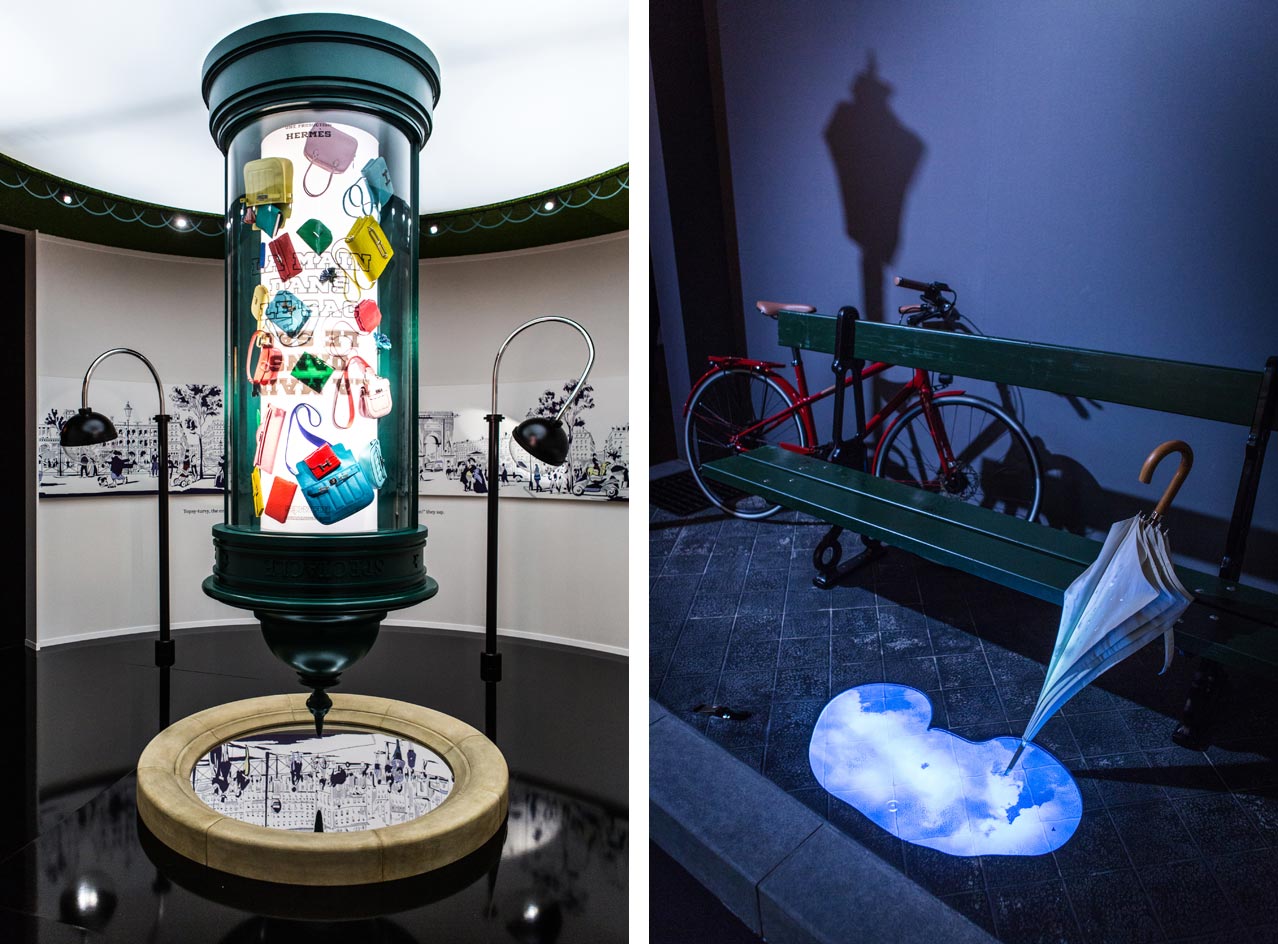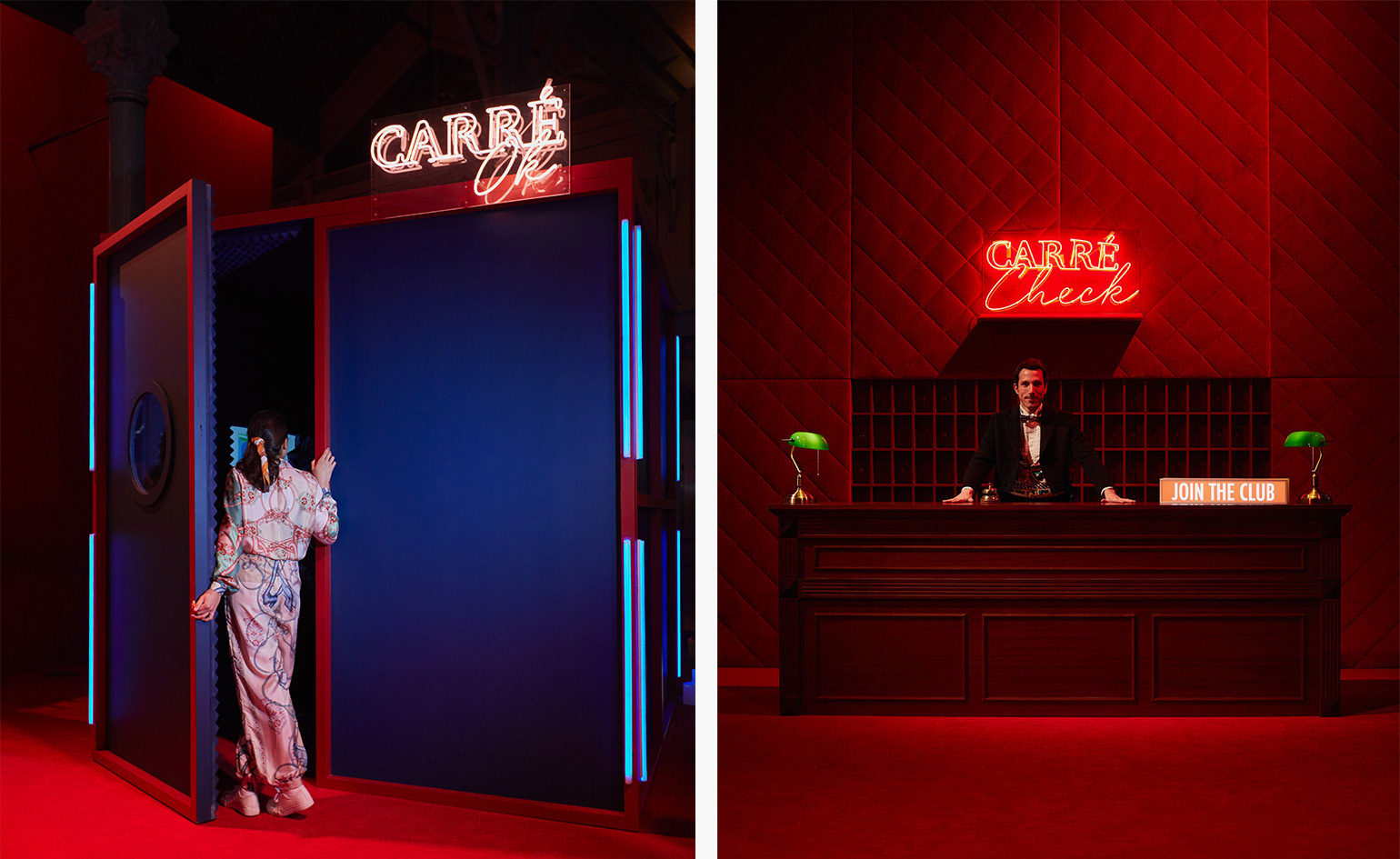Strolling in an Hermès Wanderland

At yesterday's opening of 'Wanderland', the Hermès exhibition at Saatchi Gallery that travels to Paris and Turin later this year, creative director Pierre-Alexis Dumas recalled the words of the great French philosopher Jean-Jacques Rousseau: 'I like to be busy doing nothing, … to come and go as the whim takes me, to change my plan at every moment, … to while away the day without purpose.'
Walking through the streets of most major cities, it seems that the art of aimlessly wandering is long lost. 'It's nice to just sit at a café or on a bench,' muses Dumas. 'To watch people and not do anything and watch time go by. I think it has become a luxury today, when everybody's so busy.' Dumas refers to a human habit that emerged in post-Industrial Revolution Paris in the nineteenth century, the activity of near non-activity: 'flâner'. An almost untranslatable French word, it means to wander, to stroll.
The birth of the house of Hermès in 1837 coincided with that era, prompting Dumas to choose 'flânerie' as this year's annual theme, which celebrates a poetic part of the luxury leather goods house's history.
Wanderland, with its title reminiscent of that other almost untranslatable German term, 'wanderlust', is a feat of trompe l'oeil spread over 11 rooms. Conceived by curator Bruno Gaudichon and set designer Hubert Le Gall, the exhibition, featured in our May issue (W* 194), combines pieces from the Hermès archives with odd items from Emile Hermès' personal collection, most of which relate to horses or walking.
Walking stick - the essential accessory of the flâneur - appears in the form of various wonderfully crafted canes that possess hidden features. The hunting ground of the flâneur - streets, squares, the typically Parisian covered shopping arcades and sidewalk cafés - are realistically rendered with the addition of some surreal touches - upside-down lampposts or a miniature video playing in a coffee cup, for example. Dotted about are curiosities, like a 1920s golf watch designed to be worn around the waist and the 'Spoutnik' pendant designed by Pierre Hardy for Hermès in 2009. Contemporary artists have been invited to contribute too. Visual artist Magali Desbazeille, together with her partner, the musician Siegfried Canto, have developed an audiovisual installation while British graffiti artist CEPT has created a mural on site, a local street art touch that will change according to each location.
Paying homage to places and objects that speak to our subconscious and have a soul, Wanderland summons up feelings of curiosity and wonder at the hands of precious finds, Hermès or otherwise. Gaudichon's goal was to get 'people to smile inside when they come out of here. To understand that luxury is about the pleasure of something that is not useful. I like that art de vivre: the mixture of something natural with something sophisticated.'
To read more about the lost art of wandering and the creation of 'Wanderland', turn to pg. 83 of the May 2015 issue of Wallpaper* - out now

Plunging visitors into the role of flâneur themselves, Hermès Wanderland encourages walking, stopping and staring at the dreamlike sights on show

Trompe l'oeil installations abound throughout, into which precious Hermès objects are cleverly woven

Conceived by curator Bruno Gaudichon and set designer Hubert Le Gall, Wanderland combines pieces from the Hermès archives with Emile Hermès' own curios

Walking sticks - the flâneur's essential accessory - are given an entire room

British grafitti artist CEPT's on-site mural, designed specifically for the London exhibition. Different versions for both the Paris and Turin incarnations, by different artists

'I like the art de vivre: the mixture of something natural with something sophisticated,' says Gaudichon. Here, high meets low when an Hermès bag takes on a new persona, juxtaposed with the vibrant trappings of a grafitti artist

Wanderland becomes Wonderland in this surreal street reconstruction
ADDRESS
Duke Of York's HQ
King's Road
London. SW3 4RY
Wallpaper* Newsletter
Receive our daily digest of inspiration, escapism and design stories from around the world direct to your inbox.
Siska Lyssens has contributed to Wallpaper* since 2014, covering design in all its forms – from interiors to architecture and fashion. Now living in the U.S. after spending almost a decade in London, the Belgian journalist puts her creative branding cap on for various clients when not contributing to Wallpaper* or T Magazine.
-
 Put these emerging artists on your radar
Put these emerging artists on your radarThis crop of six new talents is poised to shake up the art world. Get to know them now
By Tianna Williams
-
 Dining at Pyrá feels like a Mediterranean kiss on both cheeks
Dining at Pyrá feels like a Mediterranean kiss on both cheeksDesigned by House of Dré, this Lonsdale Road addition dishes up an enticing fusion of Greek and Spanish cooking
By Sofia de la Cruz
-
 Creased, crumpled: S/S 2025 menswear is about clothes that have ‘lived a life’
Creased, crumpled: S/S 2025 menswear is about clothes that have ‘lived a life’The S/S 2025 menswear collections see designers embrace the creased and the crumpled, conjuring a mood of laidback languor that ran through the season – captured here by photographer Steve Harnacke and stylist Nicola Neri for Wallpaper*
By Jack Moss
-
 Scene-stealing runway sets from A/W 2022 menswear shows
Scene-stealing runway sets from A/W 2022 menswear showsA Kubrickian space odyssey at Prada; a recreation of the Pont Alexandre III in Paris at Dior; and colourful, artist-created flags at Loewe: explore the best runway sets from the A/W 2022 menswear shows
By Laura Hawkins
-
 Paris Fashion Week Men’s A/W 2022: Louis Vuitton to Loewe, Dior to Hermès
Paris Fashion Week Men’s A/W 2022: Louis Vuitton to Loewe, Dior to HermèsIn this extended report, Laura Hawkins reveals 9 highlights from Paris Fashion Week Men's A/W 2022. Including: Virgil Abloh's final collection for Louis Vuitton; Rick Owen's riff on sleaze; elfin-inspired accessories; and a celebration of slouch and surrealism
By Laura Hawkins
-
 Last chance to see: Hermès celebrates craftsmanship in Copenhagen
Last chance to see: Hermès celebrates craftsmanship in CopenhagenThe Parisian maison's ‘Hermès in the Making’ exhibition at the Danish Architecture Center in Copenhagen, brings together its esteemed artisans under one roof, and celebrates the timeless power of craftsmanship and innovation – two tenets integral to timeless design today
By Laura Hawkins
-
 Scene-stealing runway sets from S/S 2022 womenswear shows
Scene-stealing runway sets from S/S 2022 womenswear showsFrom giant roulette wheels to Olympic diving boards and multi-city synchronized extravaganzas – our pick of the best fashion show sets from S/S 2022 womenswear
By Laura Hawkins
-
 Paris Fashion Week A/W 2021: discotheque chic to apres-ski sleek
Paris Fashion Week A/W 2021: discotheque chic to apres-ski sleekBy Laura Hawkins
-
 Clog on: why the slip-on shoe is the style of the season
Clog on: why the slip-on shoe is the style of the seasonWe're clogging on for the new WFH-chic
By Laura Hawkins
-
 Hermès A/W 2020 Paris Fashion Week Men’s
Hermès A/W 2020 Paris Fashion Week Men’sBy Dal Chodha
-
 Silk road: Hermès' Carré Club journeys to Paris
Silk road: Hermès' Carré Club journeys to ParisHermès Carré Club, a multi-facted and interactive exhibition celebrating the French maison's famed silk scarf, opens at the Carreau du Temple in Paris
By Marta Represa